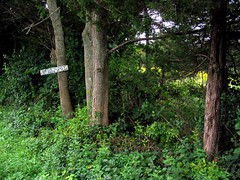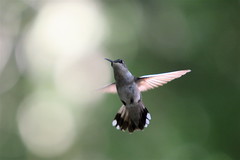Vermont, prior to extensive colonization by Europeans, was described as “a land of plenty” with abundant fish and fauna. According to the early naturalist and University of Vermont professor in Zadock Thompson, 1832 , commented that the waters “swarmed with fishes of various kinds” (Langdon et al., 2006). Salmon and lake trout were abundant; sturgeons were over six feet long and 200 pounds (Demarest, 1997). The land was full of white-tailed deer and wolves; cougars were also abundant.
More than 297 species specific Abenaki names are recorded of flora and fauna found in northeast North America (Day, 1994) (see APPENDIX 1). Of the species specific names, about 200 (67%) have been identified on Thompson’s Point (see APPENDIX 2 and APPENDIX 3).
 Sixty-nine trees are identified with Abenaki names. Even so, common tree names (e.g. Blue Beech, Grey Birch, and White Oak) are not in the dictionary, intimating that the words may have been lost. Words may be missing since much of the interviewing was done at Oldanak which in some ways is an ecologically different area than Lake Champlain and not all the known birds or fish or plants would have been there to serve as type examples. For example jewelweed (Impatiens capensis) is indigenous, common and an important medicine (as an antidote to poison ivy), yet it is not in the dictionary. Few non-native plants that are not food have Abenaki names. For example, although, oats, wheat, apples, pears, and peaches all have Abenaki entries, non-native garden flowers do not.
Sixty-nine trees are identified with Abenaki names. Even so, common tree names (e.g. Blue Beech, Grey Birch, and White Oak) are not in the dictionary, intimating that the words may have been lost. Words may be missing since much of the interviewing was done at Oldanak which in some ways is an ecologically different area than Lake Champlain and not all the known birds or fish or plants would have been there to serve as type examples. For example jewelweed (Impatiens capensis) is indigenous, common and an important medicine (as an antidote to poison ivy), yet it is not in the dictionary. Few non-native plants that are not food have Abenaki names. For example, although, oats, wheat, apples, pears, and peaches all have Abenaki entries, non-native garden flowers do not.
Thirty-seven species of mammals were identified through the dictionary. The species list of mammals is lacking Abenaki words for coyote and opossum (which are found on the Point) – which supports the understanding that coyotes and opossum are emergent species in this area. There is a word for wolf (molsem) supporting the understanding that wolves once lived in this area, even though they do not now. Words are not available for shrews or voles: it is not known if they ever had specific names or if they were categorized with “mice”. Of the mammals with Abenaki names one could expect to see 31 of 37 in an intact ecosystem on the Point; only about 14 have been identified recently.
At least 32 fish species are identified by Abenaki names. The word for brook trout is ziboiskotam, but there are no Abenaki words available for rainbow or brown trout, which were introduced into Vermont in 1886 and 1892 respectively (Langdon, Ferguson & Cox, 2006). Only one alien species has an Abenaki name: carp (Wobhagas). Of the 45 fish species that could be expected at Thompson’s Point, 24 have known Abenaki names. Some of the others may have been lost or were placed in such categories as “common fish” (e.g. chub, dace; alnamagw), “edible fish” (mowomagw), or “trash fish” (miciganakws).
 The Lake Champlain basin is located on the Atlantic Flyway for migratory birds. The birds migrating up or down Lake Champlain pass between Thompson’s Point and Split Rock, one of the narrowest parts of the Lake. The dictionary reveals 69 bird names. Of the 184 birds so far identified on the Point, 35 (19%) of them are recorded in Abenaki. Probably some names have been lost, and other species were categorized in groups, such as “little winter birds” (ponisipsak). Poignantly there is a name for the now extinct passenger pigeon (belaz).
The Lake Champlain basin is located on the Atlantic Flyway for migratory birds. The birds migrating up or down Lake Champlain pass between Thompson’s Point and Split Rock, one of the narrowest parts of the Lake. The dictionary reveals 69 bird names. Of the 184 birds so far identified on the Point, 35 (19%) of them are recorded in Abenaki. Probably some names have been lost, and other species were categorized in groups, such as “little winter birds” (ponisipsak). Poignantly there is a name for the now extinct passenger pigeon (belaz).
On the whole, although many words appear to be missing, the Abenaki lexicon can help us understand which flora and fauna are native to this area. And if you envision the names on the species list and match them with the geological features of the place, you can imagine how it was. Kwezowahomak was rich with flint, fish, timber, meat of mammals and large birds (e.g. turkeys!), and nuts. The cedars on the cliffs cushioned the interior forest from the winds of the open lake. The interior forest, was bounteous with hardwoods including butternuts, chestnuts, and hickory nut, and sugar maples. Wild grapes draped between the trees. On the ground of the moist forest were many delicate flowering plants including lilies, rare Indian Pipes, many of which are medicines. Corn was widely cultivated. Raspberries, blueberries, strawberries and blackberries produced producing decade after decade. Delicious Helianthus tubers were easily harvested. Nutritious food was abundant all year round. The evidence suggests that it was harvested on a sustainable basis for 10,000 years.
Next | Sections 1 | 2 | 3 | 4 | 5 | 6 | 7 | 8 | 9 | 10 Appendicies 1 | 2 | 3 Home



